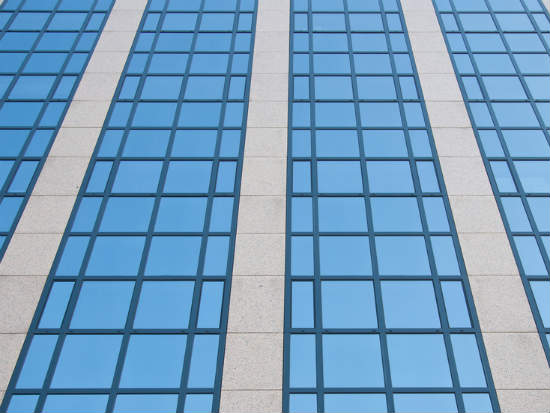Small steps create big savings for building owners, report details

Anton Havelaar via Shutterstock
It doesn't take much for building owners to enjoy a savings bonanza from energy efficiency, as the non-profit Carbon War Room explains in a report today. However, despite the potential, many private building owners miss out on the financial rewards of readily available technology.
The white paper, "Raising the Roof: How to Create Climate Wealth Through Energy Efficiency," says misinformation and a lack of understanding are just a few reasons why building owners leave easy money on the table. That's according to research gathered from 30 municipalities, from Chicago, to Wellington, New Zealand, over 30 months.
Yet with key steps, buildings can slash their energy use by 80 percent, cutting more than $78 billion per year from the electricity bills of American consumers and businesses. The report provides building owners and city sustainability officers with fine points about harnessing technology, finance and policy.
 "We already have an industry and commercial technologies that could achieve a 3 to 20 percent reduction in carbon emissions with little to zero upfront costs," said Joshua Kagan, theCarbon War Room's operation lead for building energy efficiency. "We can globally abate a gigaton-level of carbon dioxide and generate hundreds of billions of dollars in profits."
"We already have an industry and commercial technologies that could achieve a 3 to 20 percent reduction in carbon emissions with little to zero upfront costs," said Joshua Kagan, theCarbon War Room's operation lead for building energy efficiency. "We can globally abate a gigaton-level of carbon dioxide and generate hundreds of billions of dollars in profits."
Kagan points out that many building owners are waiting for some sort of breakthrough.
"There's been a misperception that we need future technologies to be discovered or created to drive down emissions and we already have those technologies today," he said.
So how can commercial and private building owners begin to capture some of that money?
A deep retrofit primarily of ventilation, temperature and high-performing light systems can add $3 to $30 per square foot to the value of office space for an occupant, the report says. That's based on potential productivity gains of 1 to 5 percent. This type of retrofitting can include installing new HVAC systems, windows, lightbulbs and ventilation systems; monitoring energy use to gauge room for improvement; and using energy storage. In addition, government programs and policies can help with costs associated with retrofits.
 "Energy efficiency is both the challenge and the opportunity," Kagan said. “If you're a business and you're able to reduce efficiency costs to a building, which oftentimes is the largest expense, you can reduce the operating costs (and) therefore increase the value of the building.”
"Energy efficiency is both the challenge and the opportunity," Kagan said. “If you're a business and you're able to reduce efficiency costs to a building, which oftentimes is the largest expense, you can reduce the operating costs (and) therefore increase the value of the building.”
Software plays an important role in benchmarking, auditing, implementation and capital upgrades, the report details. Building operators can use analytics fromFirstFuelorRetroficiency例如,监视建筑能源使用情况。同行建筑基准数据库超过120,000个建筑物可以帮助满足能源明星最佳实践。和基于平板电脑的应用程序,例如那些kWhOURScan assist with auditing.
Until recently, municipalities, universities, schools and hospitals have paid the most attention to energy efficiency, but more commercial building owners are starting to invest.
The Carbon War Room's research included:
•检查工作的能量系统,需要改进。
•看着城市的能源基准,以衡量他们是否有助于储蓄。
•Using software to track the energy output of municipalities studied.
•Gathering feedback on the hurdles and opportunities of launching energy plans.
碳战室倡导建筑业主在许多能源模型中选择,而不是遵循“一种尺寸适合所有”的方法。此外,为升级和营销和营销预算和有关任何新变更的通信都是关键。然而,未来对于全世界的能源效率来说,许多障碍干扰了。
"We have some big barriers, like high upfront costs to do retrofits, and building owners just don't have the capacity," Kagan said. "Either they don't have the capital to do it themselves or they don't have the capacity to source additional debt. ... Another barrier is the lack of data and information about how a project has performed historically. So much project data is confidential; there's no open source database that tracks historical performance."
In addition, legal and structural challenges such as mortgage covenants can prevent the sourcing of additional debt. But even with significant barriers, energy efficiency for commercial buildings will continue to grow by leaps and bounds around the world.
“我们估计了今年资助的1亿美元的项目(私下),这将在三年内缩减10亿美元,”Kagan说。
Building image byAnton Havelaar via Shutterstock


